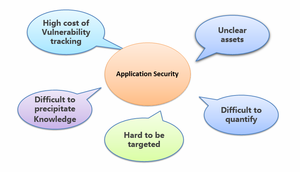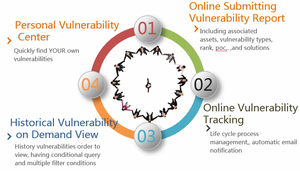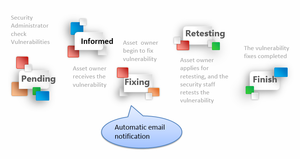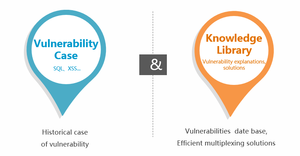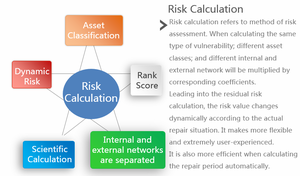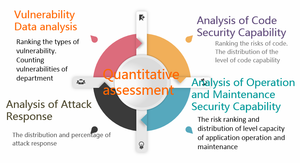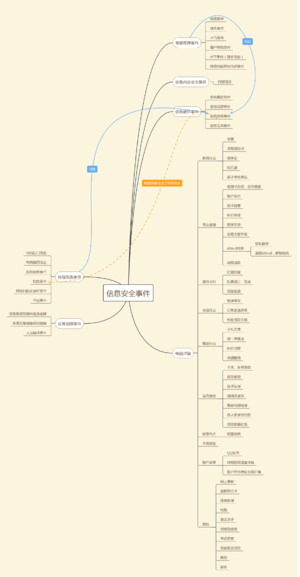This site is the archived OWASP Foundation Wiki and is no longer accepting Account Requests.
To view the new OWASP Foundation website, please visit https://owasp.org
OWASP Secure Software Development Lifecycle Project
|
OWASP Secure Software Development Lifecycle Project(S-SDLC)
OWASP Secure Software Development Life Cycle Project(S-SDLC) is an overall security software methodology for Web and APP developers.
Software security has now become a wider concept other than network security. There is a developing common sense that creating secured enough software is not just about individual skills but also or even more on work flows-- Software Development Life Cycle. To achieve security requires to be involved in every phase of a Secure Software Development Life Cycle.
The project’s final goal is to help users to reduce security issues, and raise the overall security level from every stage by using the methodology. Description
OWASP Secure Software Development Life Cycle Project(S-SDLC) defines security software development process as well as guides, tools, checklists and templates of activities in each phase.
The delivery will contain(not final): • Introduction: S-SDLC frame • Training guideline: Providing Security Training System • Requirements Phase: Risk Evaluation Guideline, and Requirements Criteria Doc. • Design Phase: Security Design Review Guideline and Threat Modeling Guideline. • Implement Phase: Security Coding Guide(C/C++、JAVA、PHP,C#) • Validation Phase: Actives level, Security Testing Guideline • Release/maintenance Phase: Vulnerability Management and Incident Response Guideline Detail information is in below table of content:
Licensing
Creative Commons Attribution ShareAlike 3.0 License
The OWASP Secure Software Development Lifecycle Project materials are free to use. In fact it is encouraged!!! Additionally, I also encourage you to contribute back to the project. I have no monopoly on this knowledge; however, we all have pieces of this knowledge from our experience. Let's begin by putting our individual pieces together to make something great. Great things happen when people work together. The OWASP Secure Software Development Lifecycle Project materials are licensed under the http://creativecommons.org/licenses/by-sa/3.0/ Creative Commons Attribution-ShareAlike 3.0 license], so you can copy, distribute and transmit the work, and you can adapt it, and use it commercially, but all provided that you attribute the work and if you alter, transform, or build upon this work, you may distribute the resulting work only under the same or similar license to this one. |
What is OWASP Security Principles Project?
OWASP Secure Software Development Life Cycle Project is an overall security software methodology for Web and APP developers. The project’s goal is to help users to reduce security issues, and raise the overall security level from every stage by using the methodology. Presentation
Project Leader
The OWASP Secure Software Development Lifecycle Project is developed by a worldwide team of volunteers. A live update of project contributors is found here. The first contributors to the project were: Related Projects
To be updated... Openhub |
Quick Download
News and Events
To be updated... In Print
Classifications
| |||||||||||||||||||||||||||||||||||||||||||||||||||||||||||||
How can I participate in your project?
All you have to do is make the Project Leader's aware of your available time to contribute to the project. It is also important to let the Leader's know how you would like to contribute and pitch in to help the project meet it's goals and milestones. There are many different ways you can contribute to an OWASP Project, but communication with the leads is key.
If I am not a programmer can I participate in your project?
Yes, you can certainly participate in the project if you are not a programmer or technical. The project needs different skills and expertise and different times during its development. Currently, we are looking for researchers, writers, graphic designers, and a project administrator.
Contributors
The OWASP Secure Software Development Lifecycle Project is developed by a worldwide team of volunteers. A live update of project contributors is found here.
The first contributors to the project were:
- RIP (Sub-project Owner)
- Silver Zhang(Sub-project Owner)
- Kevin (Sub-project Owner)
- Xia Tianze (Sub-project Owner)
- Yu Kan(Sub-project Owner)
- Lance Li (Sub-project Owner)
- Wang Jie (Sub-project Owner)
- Bao Yuezhong (Participant)
- Ricky Xu (Participant)
Base on the current estimation, the roadmap of the OWASP Secure Software Development Life Cycle Project is below:
| Sub-Project Name | Purpose | RoadMap | Sub-Porject Owner and Participant | Output and Delivery | Ref |
|---|---|---|---|---|---|
| OWASP S-SDLC Project | OWASP Secure Software Development Life Cycle Project defines security software development process. This part of the project is an overview of the life cycle. | 2017Q3 | Project Owner:
RIP Kevin Yuezhong Bao Tianze Xia Project Manager: XuFei |
OWASP S-SDLC Project Introduction Doc and Slides | |
| OWASP S-SDLC Overall Flow | This part of the OWASP S-SDLC Project defines phases of the life cycle and give suggestions and best practices of adoption. | 2017Q2-Q4 | Kevin
Peter Xiao |
Best Practices of S-SDLC in Enterprises | |
| OWASP S-SDLC Security Awareness Training | This part provides guidelines of security awareness trainings. These trainings are to enhance the sensitivity of security of software developers. | 2017Q2-Q4 | Jie Wang | (1)Training slides
(2)Training Videos (3)Examples of examination questions |
(1)OWASP TOP 10
(2)OWASP MOBILE TOP 10 (3)OWASP IoT TOP 10 |
| OWASP S-SDLC Security Requirement | This part of OWASP S-SDLC aims to acquire security requirements by identifying the functional implementation, position in industry or general security requirements (eg, compliance requirements). | 2017Q2-Q4 | Tianze Xia | (1)Best Practices of S-SDLC Security Requirement
(2)Security Requirement Checklist |
OWASP Cheat Sheet Series |
| OWASP S-SDLC Security Design | This part of S-SDLC will guide to deliver a doable security design to the implementation team by considering potential technical security risks. So that by avoiding the early detections of security risks, the cost to build secure products is in control. | 2017Q2-Q4 | Lance Li | (1)Best Practices of S-SDLC Security Design
(2)Benchmark of OWASP security baseline (3)Threat Modeling Guide (4)Security Guideline for Common Components |
(1)Application Threat Modeling
(2)OWASP ESAPI |
| OWASP S-SDLC Security Implementation | The goal of this sub-project of OWASP S-SDLC are to:
(1) Let implementation teams do secure coding. The key is to let team understand security features of the language and framework they use, and obey the output of the S-SDLC security design (2) Let implementation teams identify and fix defects in legacy codes. The key is to adopt automated, efficient tech (eg. IAST) by providing guidelines and best practices. |
2017Q2-Q4 |
Kan Yu Ricky |
(1)Best Practices of S-SDLC Security Implementation
(2)Security Sriteria Checking Tool Sets for Coding (3)Guideline for OWASP Code Review |
(1)OWASP Code Review Guide Project
(2)OWASP Cheat Sheet Series |
| OWASP S-SDLC Security Test | Security testing is a process intended to reveal flaws in the security mechanisms of an information system that protect data and maintain functionality as intended
Typical security requirements may include specific elements of confidentiality, integrity, authentication, availability, authorization and non-repudiation. Actual security requirements tested depend on the security requirements implemented by the system. Due to the logical limitations of security testing, passing security testing is not an indication that no flaws exist or that the system adequately satisfies the security requirements. This part of the OWASP S-SDLC project will provide some best practice and useful tips of security testing to help a.) Beginners can start security test easily; b.) Professionals can use for reference. |
2017Q2-Q4 | Tianze Xia | (1)Best Practice of S-SDLC security testing
(2)Best Practice of OWASP Cheat sheet (3) Best Practice of OWASP ASVS |
(1)OWASP testing Guide
(2)OWASP Cheat sheet (3)OWASP Application Security Verification Standard Project (ASVS) |
| OWASP S-SDLC Security Deployment & SecDevOps | In this phase of the S-SDLC focus on security auditing before deployment and security monitoring. The sub-project will research on
(1) develop a appropriate security baseline for deployment and devops (2) the process of incident response and related tech. (3)SecDevOps |
2017Q2-Q4 | RIP | (1)Best Practice of S-SDLC security Deployment
(2)Best Practice of S-SDLC SecDevOps (3)Security Baseline for deployment and devops (4)OpenRASP |
OWASP AppSensor
OpenRASP |
Involvement in the development and promotion of the OWASP Secure Software Development Lifecycle Project is actively encouraged! You do not have to be a security expert in order to contribute. Some of the ways you can help:
- Helping find references to some of the principles.
- Project administration support.
- Wiki editing support.
- Writing support for the book.
This Page includes S-SDLC releated stuffs. Categorized as a.)Tools b.) Libraries c.)Technical Docs
Tools
- OpenRASP
OpenRASP is an open-source, free and self-adapting security tool made for OWASP S-SDLC Security Deployment & SecDevOps phase.
It can provide functions like threat detection, data stream monitor, quick-response to production by the deep integration of its protection engine.
Unlike other perimeter control solutions like WAF, OpenRASP directly integrates its protection engine into the application server by instrumentation. It can monitor various events including database queries, file operations and network requests etc.
When an attack happens, WAF matches the malicious request with its signatures and blocks it. OpenRASP takes a different approach by hooking sensitive functions and examines/blocks the inputs fed into them. As a result, this examination is context-aware and in-place. It brings in the following benefits:
1. Only successful attacks can trigger alarms, resulting in lower false positive and higher detection rate;
2. Detailed stack trace is logged, which makes the forensic analysis easier;
3. Insusceptible to malformed protocol.
OpenRASP FAQ
1. List of supported web applicationBelow table shows the recent updates of the project.Below tables shows recent updateBelow table shows recent updates.s. servers
Only Java based web application servers are supported for now. The support of other web application servers will also be soon included in the coming releases.
OpenRASP on the following application servers for both Linux and Windows platforms has been tested.
- Tomcat 6-8
- JBoss 4.X
- WebLogic 11/12
2. Performance impact on application servers
Multiple intense and long-lasting stress tests has been taken. Even in the worst-case scenario (where the hook point got continuously triggered) the server’s performance was only reduced by 10%
3. Integration with existing SIEM or SOC
OpenRASP logs alarms in JSON format, which can be easily picked up by LogStash, rsyslog or Flume.
4. How to develop a new plugin?
A plugin receives a callback when an event occurs. It then determines if the current behavior is malicious or not and blocks the associated request if necessary.
Detailed documents available on github.
- "INSIGHT" Platform
"INSIGHT" is a management platform developed by the Security Department of CreditEase which integrates Application system asset, Vulnerability lifecycle, and Security knowledge base.
- Application System Asset Management: managing assets of application system in the company, including system name, domain, senior level, department, and owner.
- Vulnerability Lifecycle Management: proceeding online submission, notification, verification, retesting, classification, risk calculation, repair deadline calculation, email reminder, and vulnerability data analysis for the security vulnerability found from application system in the company.
- Security Knowledge Management: implementing centralized storage, online learning, security training, and knowledge inherited of security knowledge and standard specification.
"INSIGHT" was developed by Python language and form of Flask framework & MySQL & Docker container.
Detailed documents available on github.
The concept of design
Application security activities begin with the risk assessment of the application assets. When the company accumulates more assets, it shall encounter increasing problems, such as unclear assets resource, miss of asset owner, the high cost of continuous of vulnerability tracking and difficulty of security knowledge penetrating, no data support for high-frequency risks, and failure of solving core problems, In addition, risk quantification is also a problem.
In the design of application security management framework, the general process of risk governance is as follows:
Based on the demands of the above risk governance, “INSIGHT" came into being.
Highlights
After the implement of "INSIGHT" system, we achieved the following goals. Please see the following picture:
Vulnerability history at a glance
Vulnerability tracking is methodical
Learning Cases can be found easily
Safety requirements are precisely controlled
Threats and risks are well-founded
Quantitative figures are known in real time
Libraries
To be added.
Technical Docs
To be added.
Top Security Incidents
Project purpose / overview:
This project is sub-project for OWASP S – SDLC Project, aimed at the hot spot in the social public security problem. Through the analysis of security problems, case demonstration, in order to arouse public awareness of the security, enhance people's consciousness of network safety as well as to understand and to grasp the method of network security. Finally, everybody is responsible for network security and good atmosphere of everyone involved.
The scope of this project includes 1. Collect and sort public security issue around; 2. Output OWASP Security Awareness Top 10 Document; 3. Build an open source website platform to share information.
本项目为OWASP S-SDLC子项目, 旨在针对社会公众关注的热点安全问题,通过对安全问题的分析、案例演示,唤起公众对安全的关注,提升人民群众网络安全意识,了解和掌握网络安全防范方法,营造网络安全人人有责、人人参与的良好氛围。
本项目范围包括1.收集整理分类公共安全事件;2.输出OWASP安全意识top10文档;3.搭建开源网站平台分享信息
Project Roadmap:
| Phase | Date |
|---|---|
| Web site technology solutions
网站技术方案 |
June 13- June 23, 2018
2018年6月13日-6月23日 |
| Data Classification Standard
数据分类标准 |
May25- June1, 2018
2018年5月25日-6月1日 |
| Data collection 1
手动收集整理分类数据阶段1 |
June 2- June10, 2018
2018年6月2日-6月10日 |
| Data collection 2
手动收集整理分类数据阶段2 |
June 11- June15, 2018
2018年6月11日-6月15日 |
| Review categories and Website debugging
评审类别和网站调试 |
June 11- June20, 2018
2018年6月11日-6月24日 |
| Output-Secure Awareness TOP 10 Document
安全意识TOP 10文档 |
June 21, 2018
2018年6月21日 |
| Web Site on line
网站上线 |
June 25, 2018
2018年6月25日 |
Recently Update:
The results of Top 10 cyber security incidents shows as below (detail information and English version will be updated)
| 1 | 利用漏洞攻击事件 |
| 2 | 信息泄漏事件 |
| 3 | 信息系统软硬件自身故障事件 |
| 4 | 病毒事件 |
| 5 | 信息篡改事件 |
| 6 | 木马事件 |
| 7 | 钓鱼事件 |
| 8 | 电信诈骗 |
| 9 | 干扰事件 |
| 10 | 信息丢失事件 |
Project Leader name:
Jack Ding
Project Leader email address:
Team Member:
TBD
Mentor:
Xia Tianzhe
Zou Qingmign
Attachment: Data Classification Standard
(Will provide English Version Later)
| Main Section | Chapter | Status |
|---|---|---|
| Preface | Purpose of S-SDLC | Done. Waiting for approve |
| Coverage of S-SDLC | Done. Waiting for approve | |
| Security Strategy | Security Strategy | Done. Waiting for approve |
| Security Goal | Done. Waiting for approve | |
| The infrastructure of security engineering capability | A Brief Overview of the Infrastructure | Done. Waiting for approve |
| Organization Structures | Done. Waiting for approve | |
| The Flow Framework | Done. Waiting for approve | |
| The Security Tech Framework | Done. Waiting for approve | |
| The Chain of Tools | Done. Waiting for approve | |
| The Training System | Done. Waiting for approve | |
| The Measurement System | Done. Waiting for approve | |
| Security Requirements | To Understand Security Requirements | Done. Waiting for approve |
| How to build Security Requirements | Done. Waiting for approve | |
| The interpretation of OWASP Top10 Project for training purpose | Detailed explanations of the top 10(e.g. Demo) | Calling for volunteers |
| TBD... | TBD... |




